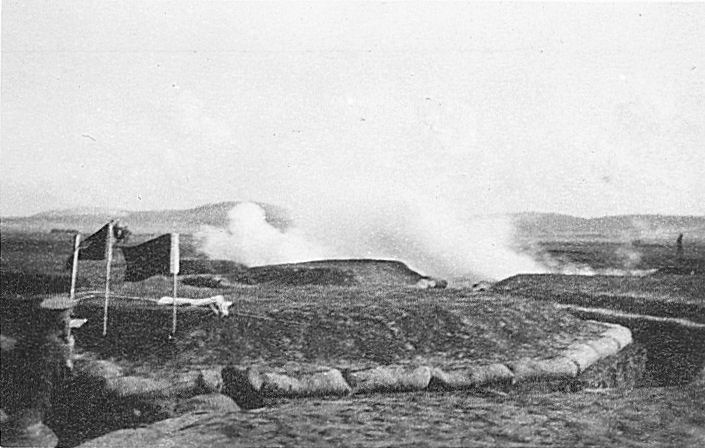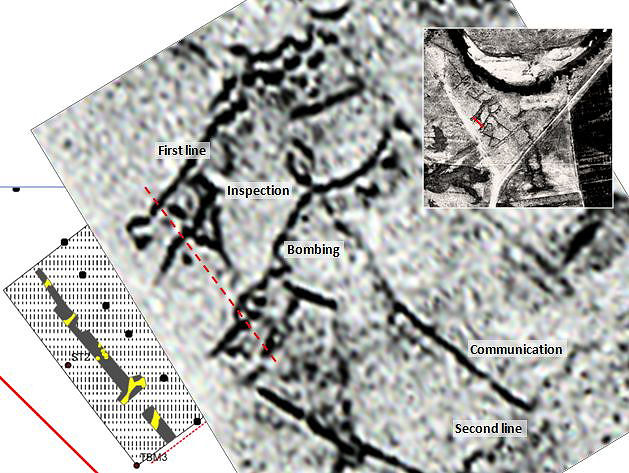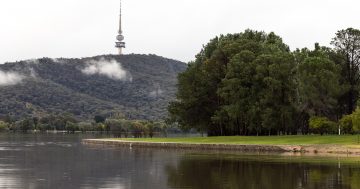
The Jerrabomberra Wetlands may look like a large paddock, but underneath the soil lies a site of national historical significance. Over 100 years ago, Duntroon built trenches across the river from its school to train officers in Trench Warfare and Bombing during World War 1. Buried and forgotten, the trenches were rediscovered in 2014 by Canberra historical writer Mark Butz, who now runs tours of the site as part of the Woodlands and Wetlands Trust.
“I was doing some research into the history of Jerrabomberra wetlands when I came across a reference to soldiers doing training out on the flat opposite Duntroon,” says Mr Butz. “So I started hunting old photos to see if I could pick up anything, and we did see strange shapes in the photos and we then found earlier air photos which confirmed to me that there were, in fact, man-made structures out there on the flats. We looked at maps and archives which told us there was no question where they were and what they were.”
Mr Butz went on to investigate further and excavated part of the trenches in 2015 with the help of the ANU. Stripping away 60cm of ground surface, the exercise uncovered sandy lines running across the black soil of the flat.
“We were surprised it was there, surprised to find it and surprised it was forgotten. You could still see it under the surface. Unfortunately, we had to re-bury it because the weather would destroy it, and the water table is higher as well. When you dig down the trenches are half full of water, which was different 100 years ago,” he says.
“Because we did the excavation we were able to plot on the land with some accuracy where the lines of the trenches probably run under the surface. We’ve marked the lines out so we can walk the system on the tour and talk about what each part of it did and why it was built the way it was.”

The Jerrabomberra Wetlands is a by-product of the creation of Lake Burley Griffin. It was always a flood plain, but when the lake was built it backed water up into the Molongolo River, Jerrabomberra Creek and other channels in the flat which created water where there wasn’t before. The area has now become a habitat for birds, platypuses and other native wildlife, and has since become a heritage listed site. Luckily this has meant that the buried trenches were preserved, whereas similar training sites in other capital cities have been built over as the cities expanded over the last hundred years.
“The wetlands are known for the birds, platypuses and water rats but they also have a lot of history attached to them,” says Mr Butz. “The discovery of the trenches represented a new Canberra story, totally forgotten. It was exciting because we could do real archaeology to investigate, and exciting because this was all happening at the Centenary of WW1, so it captured people’s imagination and still does.”
Mr Butz will be releasing a book on the history and discovery of the training trenches in the coming months (refer to the Jerrabomberra Wetlands website for updates), and will be running tours of the site this Friday and Saturday, and later in April and May as part of the Canberra and Region Heritage and Festival.
Dates: April 21, 22, 30 and May 4, various times
Price: $15-$90
More info: jerrabomberrawetlands.org.au/events
Images supplied by the Army Museum of Officer Training














